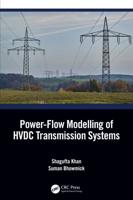Publisher's Synopsis
HTS transmission cables produce a beneficial redistribution of power flows when substituted for conventional cables or conductors or when added to the power transmission grid The slow growth of power transmission systems and the large growth in demand for power have contributed to higher electricity prices and reduced reliability in a number of areas across the United States in recent years. The authors demonstrate that high-temperature superconducting power technologies can address existing problems with the U.S. electric power transmission grid, especially problems with transmission constraints. The slow growth of power transmission systems relative to the large growth in demand for power has played a major role in higher electricity prices and reduced reliability in a number of areas across the United States in recent years. This book evaluates the potential of high-temperature superconducting (HTS) power technologies to address existing problems with the U.S. electric power transmission grid, especially problems with transmission constraints.;Among other findings, the authors conclude that HTS underground cables provide an attractive retrofit option for urban areas that have existing underground transmission circuits while avoiding the expense of new excavation to increase capacity. When operated at high utilization, HTS cables provide energy savings benefits as compared with conventional cables or conventional overhead lines per unit of power delivered. Whether these energy savings benefits lead to life-cycle cost savings depends on the cost of electricity and, in the case of conventional overhead lines, on siting constraints because overhead lines are typically much cheaper to install than underground cables. In addition, HTS cables can provide a parallel transmission path at a lower voltage to relieve high-voltage transmission constraints. ND










